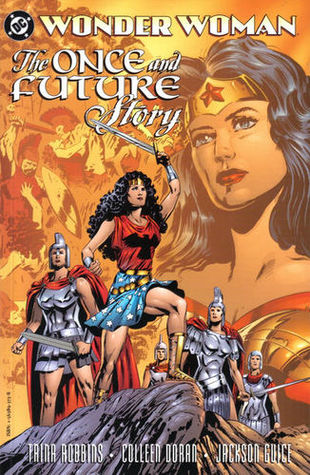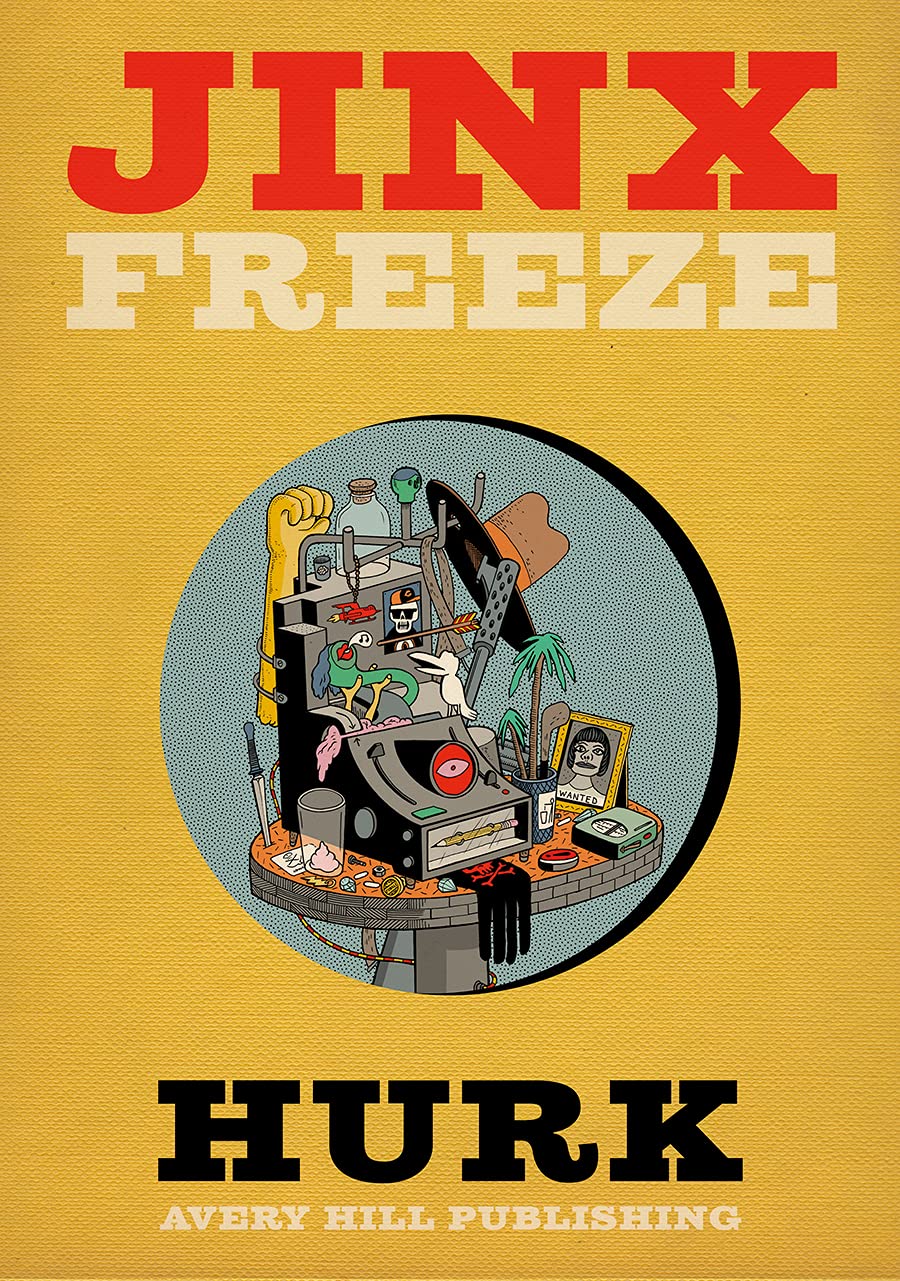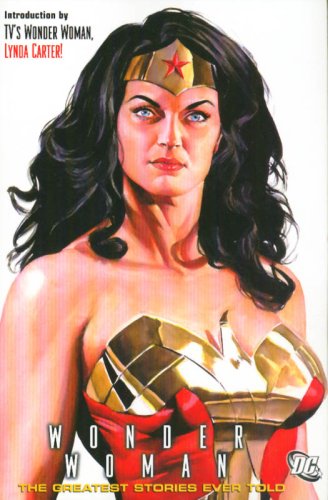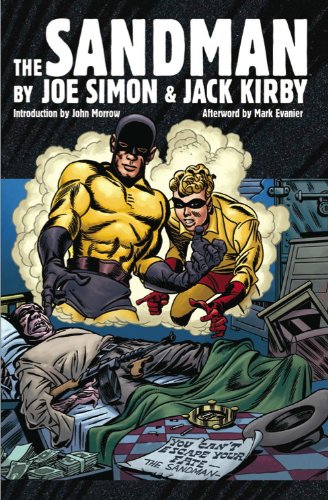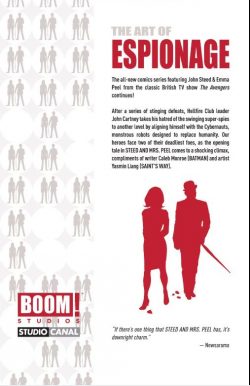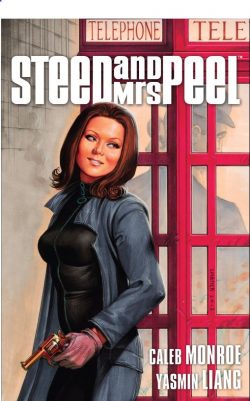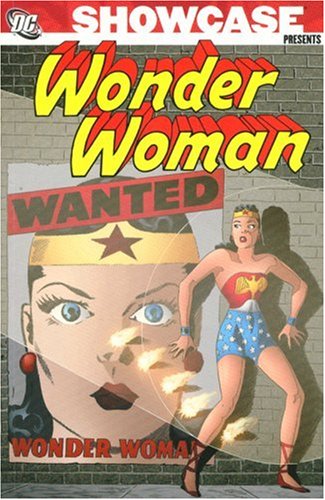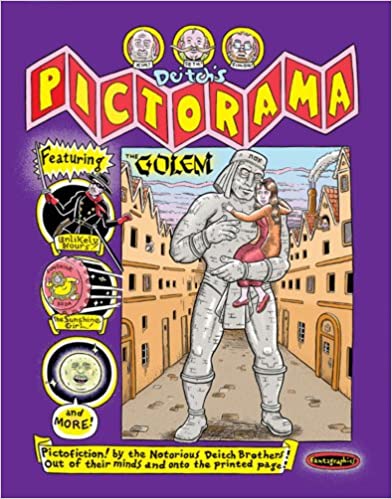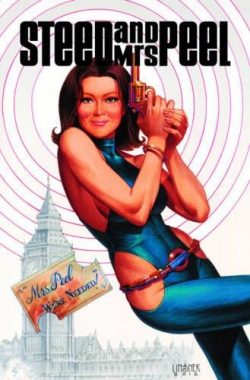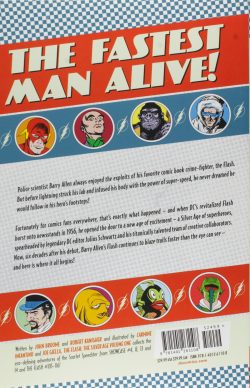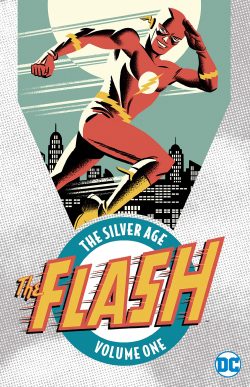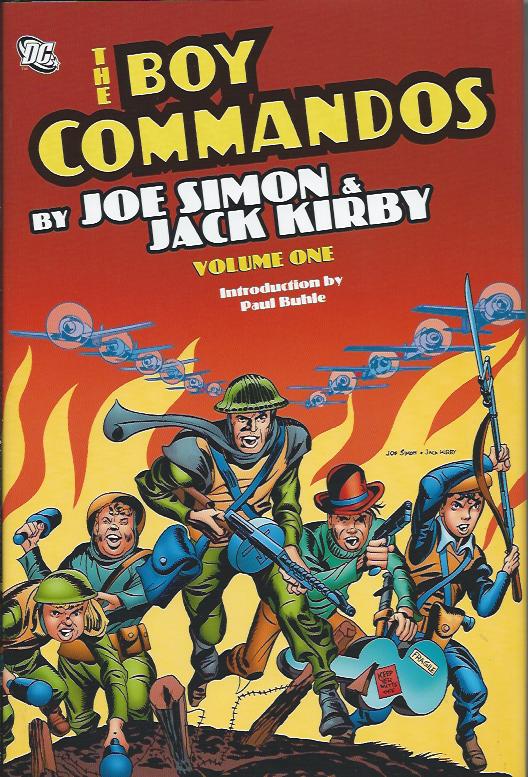
By Joe Simon & Jack Kirby & various (DC Comics)
ISBN: Â 978-1-4012-2921-4 (HB)
Win’s Christmas Gift Recommendation: Ideal for Fanboys, Superhero Purists and Lovers of Sheer Comic Exuberance… 9/10
Just as the Golden Age of comics was kicking off two young men with big hopes met up and began a decades-long association that was always intensely creative, immensely productive and spectacularly in tune with popular tastes.
Joe Simon was a sharp-minded, talented gentleman with 5-years-experience in “real†publishing, working from the bottom up to art director on a succession of small newspapers such as the Rochester Journal American, Syracuse Herald and Syracuse Journal American before moving to New York City and a life of freelancing as an art/photo retoucher and illustrator. Recommended by his boss, Simon joined Lloyd Jacquet’s pioneering Funnies Inc., a comics production “shop†generating strips and characters for a number of publishing houses eager to cash in on the success of Action Comics and its stellar attraction Superman.
Within days Simon created The Fiery Mask for Martin Goodman of Timely (now Marvel) Comics and met young Jacob Kurtzberg, a cartoonist/animator just hitting his imaginative stride with Blue Beetle for the Fox Feature Syndicate.
Together Simon and Kurtzberg (who went through a battalion of pen-names before settling on Jack Kirby) enjoyed stunning creative empathy and synergy which galvanized an already electric neo-industry with a vast catalogue of features and even genres.
At a rocket-pace they produced the influential Blue Bolt, Captain Marvel Adventures #1 and – after Martin Goodman appointed Simon editor at Timely – a host of iconic characters such as Red Raven, Marvel Boy, Hurricane, The Vision, The Young Allies and a scene-stealing guy named Captain America.
When Goodman failed to make good on his financial obligations, Simon & Kirby jumped ship to National/DC, who welcomed them with open arms and an large chequebook. Initially an uncomfortable fit, bursting with ideas the company were not comfortable with, the pair were soon handed two failing strips to play with until they found their creative feet.
Soon after establishing themselves with The Sandman and Manhunter, they were left to their own devices and promptly returned to the “Kid Gang†genre they had created with The Young Allies for a unique juvenile Foreign Legion entitled The Boy Commandos.
These bellicose brats initially shared – or stole – some of the spotlight from Batman & Robin in flagship title Detective Comics before and whilst their solo title became one of the company’s top three sellers.
Boy Commandos was such a success – often cited as the biggest-selling American comic book in the world at that time that the editors – knowing “The Draft†was lurking – green-lit the completion of a wealth of extra material to lay away for when their star creators were called up. S&K and their studio team produced so much four-colour magic in a phenomenally short time that Publisher Jack Liebowitz eventually suggested they retool some of it into adventures of a second kid gang… and thus was born The Newsboy Legion (and their tag-along super-heroic mentor The Guardian)…
Those guys we’ll get to some other time, but today let’s applaud this splendidly sturdy full-colour hardback compilation (still regrettably unavailable in digital formats), re-presenting the first 10 months of the courageous child soldiers as seen in Detective Comics #64-72; World’s Finest Comics #8-9; Boy Commandos #1-2 (spanning June 1942 to March 1943): a barrage of bombastic blockbusters at once fervently patriotic morale-boosters, rousing action-adventures and potent satirical swipes and jibes by creators who were never afraid to show that good and evil was never simply just “us & themâ€â€¦
Following a scholarly Introduction from respected academic Paul Buhle, the vintage thrills and spills commence with a spectacular introduction to the team as only S & K could craft it: a masterpiece of patriotic fervour eschewing lengthy explanations and origins in favour of immediate action. ‘The Commandos are Coming!’ cleverly follows the path of a French Nazi collaborator who finds the courage to fight against his country’s conquerors after meeting the unconventional military unit.
We never learn how American Captain Rip Carter got to command a British Commando unit nor why he was allowed to bring a quartet of war-orphans with him on a succession of deadly sorties into “Festung Europaâ€, North Africa, the Pacific or Indo-Chinese theatres of war. All we had to do was realise that cockney urchin Alfy Twidgett, French lad Pierre – latterly and unobtrusively renamed Andre – Chavard, little Dutch boy Jan Haasen and rough, tough little lout Brooklyn were fighting the battles we would, if we only had the chance…
From the start the yarns were strangely exotic and bizarrely multi-layered, adding a stratum of mythmaking and fantasy to the grimly grisly backdrop of a war fought from the underdog’s position. Detective Comics #66 (featuring a stunning art-jam cover by Jerry Robinson and Simon & Kirby, with the Caped Crusaders welcoming the squad to their new home) saw the exploits of the juvenile warriors related by a seer to feudal Queen Catherine of France in ‘Nostrodamus Predicts’.
She saw and drew comfort from Carter’s attempt to place the kids in a posh boarding school, only to uncover a traitor in educator’s clothing which led to a shattering raid right in the heart of the occupier’s defences…
The locale shifted to Africa and time itself got bent when ‘The Sphinx Speaks’ reveals how a reporter in the year 3045 AD interviews a mummy with a Brooklyn accent. The seeming madness materialised after the Commando “mascots†arrived in Egypt in 1942 to liberate a strategically crucial village to unearth a Nazi radio post inside an ancient edifice. Whilst they were causing their usual corrective carnage, one of the lads had a strange meeting with the rocky pile’s oldest inhabitant…
Another esoteric human interest tale began back in Manhattan where hoods Horseshoes Corona and his best pal Buttsy Baynes barely avoid a police dragnet and ‘Escape to Disaster!’ by heading out into the open ocean… and straight into the sights of a U-boat. The sight of the gloating Nazis laughing as his friend perishes has a marked effect on one heartless gangster…
When badly wounded Horseshoes is later picked up by Carter’s crew, he immediately has a negative influence on impressionable, homesick Brooklyn, but turns his life around in its final moments after the Allied vessel attacks an apparently impregnable German sea-base…
Detective #68 exposes ‘The Treachery of Osuki!’ as an aerial dogfight dumps the boys and a Japanese pilot in the same life-raft. Once they hit land, the obsequious flier begins grooming the simple island natives who rescued them, but ultimately can’t mask his fanatical urge to conquer and kill. Next, an epic of East-West cooperation sees the army urchins battling Nazis beside desperate Russian villagers at ‘The Siege of Krovka!’, determined to make the invaders pay for every frozen inch of Soviet soil in a blockbusting tale of heroism and sacrifice.
Another odd episode finds contentious, argument-addicted New York cabbie Hack Hogan drafted and – protesting all the way – slowly transformed into a lethal force of nature sticking it to the Nazis in the heart of their homeland, with the kids reduced to awestruck observers in ‘Fury Rides a Taxicab!’
An astounding hit, the kids became a fixture in premier all-star anthology World’s Finest Comics with #8’s (Winter 1942-1943) ‘The Luck of the Lepparts’ wherein an utter cad and bounder battles to beat a curse which has destroyed three previous generations of his family of traitors. Is it fate, ill fortune or the arrival of the Boy Commandos in the Burmese stronghold he planned to sell out that seals his fate?
That same month saw the inevitable launch of Boy Commandos #1 which explosively opens with ‘The Town that Couldn’t be Conquered!’ Here, Rip leads the lads back to Jan’s home village to terrify the rapacious occupiers and start a resistance movement, after which ‘Heroes Never Die’ fancifully finds the team in China where they meet a dying monk.
This aged sage remembers his childhood when a white pirate and four foreign boys led a bandit army against imperial oppression. He has waited for their prophesised return ever since the Japanese invaded…
This period of furious productivity resulted in some of Simon & Kirby’s most passionate yet largely unappreciated material. As previously stated, Boy Commandos regularly outsold Superman and Batman during WWII, and the moody ‘Satan Wears a Swastika’ clearly shows why, blending patriotic fervour with astonishing characterisation and a plot of astonishing sophistication.
When news comes of the team’s death, official scribes Joe & Jack convene with the Sandman and Newsboy Legion on how to handle the morale-crushing crisis. While the Homefront heroes debate, across the ocean, answers unravel. The confusing contretemps had begun when a quartet of wealthy little people decided that despite their medical deficiencies they would not be cheated of their chance to fight fascism. Accompanied by their tall, rangy butler, they set up as a private combat unit and plunged into the bowels of Berlin, even as the real Commando kids were being run ragged by the Germans’ most deadly operative Agent Axis…
That epochal initial issue ends with a weird war story as the boys keep meeting French soldier Francois Girard who shares snippets of useful intel as they prepare for their most audacious mission: kidnapping Hitler…
Even though the sortie eventually comes up short, the blow to the enemy’s morale and prestige is enormous, but on returning home the codenamed ‘Ghost Raiders’ shockingly learn that for one of their number, the title is not metaphorical…
Back in Detective #71 (January 1943) ‘A Break for Santa’ offers a stellar change of pace as the boys organise a treat for orphans and opt – even if they are cashiered for it – to rescue one lad’s dad from a concentration camp as a Christmas treat…
The next issue saw them uncover a devilish espionage/sabotage ring operating out of a florist’s shop in ‘Petals of Peril’whilst #73 revealed ‘The Saga of the Little Tin Box’ with Rip dragging the kids through hellish African jungles ahead of a cunning and supremely competent Nazi huntsman; watching them slowly psychologically unravel as they become increasing obsessed with a pointless trinket…
That mystery successfully solved and survived, the action switched to Europe for World’s Finest Comics #9 with the kids going undercover as circus performers cautiously recruiting a cadre of operatives to strike against the oppressors from within, culminating in ‘The Battle of the Big Top!’
This stunning collection concludes with the contents of Boy Commandos #2 (Spring 1943), leading with ‘The Silent People Speak’ as two Danish brothers – one on each side of the conflict – resolve years of jealousy and hatred after the Commandos stage an incursion into their strategically crucial village. Mordant black comedy then resurfaces as wastrel nobleman Lord Tweedbrook is drafted and his butler becomes his drill-sergeant. Happily, the young lions are on hand to stop the suffering scion absconding and ensure the turbulent toff’s transition to fighting tiger in ‘On the Double, M’Lord!’
Another tantalising twice-told tale has Rip and the boys invade fairy tale European kingdom Camelon to rescue a sleeping Queen (from magic spells or Nazi drugs?) in ‘The Knights Wore Khaki’, before this first wave of yarns culminates with a gloriously sentimental romp as the kids adopt a battered and bloody bomb crater kitten, smuggling him onto a vital mission. Things look bad until even little “Dodger†proves he would give ‘Nine Lives for Victory’…
Although I’ve concentrated on the named stars it’s important to remember – especially in these more enlightened times still plagued with the genuine horror of children forcibly swept up in war they have no stake in – that the Boy Commandos, even in their ferociously fabulous exploits, were symbols as much as combatants, usually augmented by huge teams of proper soldiers doing most of the actual killing.
It’s not much of a comfort but at least it proves that Simon & Kirby were not simply caught up in a Big Idea without considering all the implications…
Brilliantly blockbusting and astoundingly appetising, these superb fantasies from the last “Good War†are a superb and spectacular example of comics giants at their most creative. No true believer or dedicated funnybook aficionado should be denied this book.
© 1942, 1943, 2010 DC Comics. All Rights Reserved.

